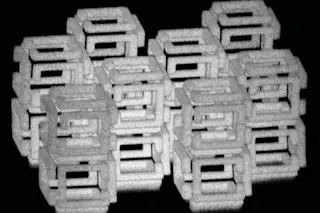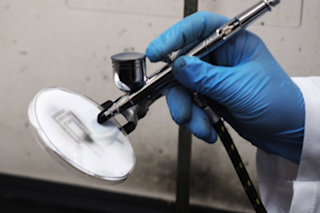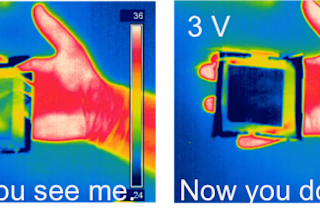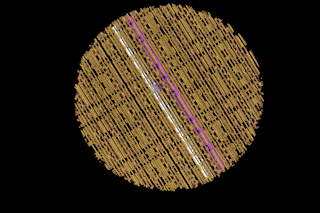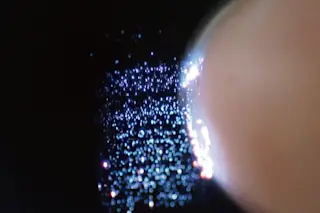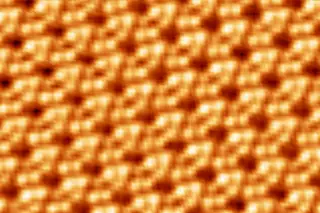If a silver bullet that kills cancer is ever developed, the man holding the gun might be physical chemist Hongjie Dai of Stanford University. Dai's research team is testing a cancer killer that does not harm healthy cells and acts without drugs or chemotherapy. "It should work for all cancers," says Dai, "because the mechanism is so simple."
Carbon nanotubes (green) take aim at cancer cell nuclei (red). | NULL
Dai's team coats carbon nanotubes—hollow cylinders of carbon only a few atoms wide—in folic acid, a molecule that binds with certain types of cancers, including breast cancer. Once the cancer cells absorb the carbon, the researchers fire a near-infrared laser at the cells for two minutes. The beam passes harmlessly through living tissue, but the nanotubes get so hot they roast nearly all of the cancer cells after one exposure.
Last year, researchers at Rice University developed a similar treatment ...



